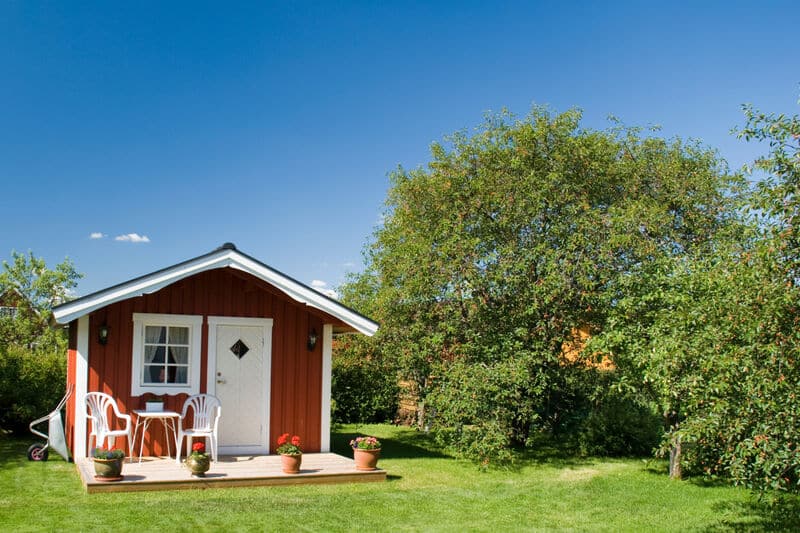An accessory dwelling unit (ADU) is not a novel concept. ADUs have existed in some form in the United States for almost as long as housing.
So, what is an accessory dwelling unit?
Once known as servant’s quarters, ADUs morphed into “mother-in-law houses,” garage apartments, and detached secondary living units. The simplest definition or meaning is that accessory dwelling units are secondary dwellings on a primary residential property. Some also call an ADU an accessory apartment, guest apartment, family apartment, additional dwelling unit, or in-law apartment.
For a time, ADUs fell out of fashion. In recent years, ADUs are coming back into focus as an effective avenue for homeowners to increase the value or utility of their property. In addition, many municipalities consider ADUs a vehicle to ease the lack of affordable housing.
Accessory dwelling units expand housing options for people of all ages and backgrounds. Since ADUs come in many shapes and sizes, they can fit discreetly into various communities.
Whether a homebuyer is looking for a home with an existing ADU or wants to build one in the future, it’s essential to understand available options and how requirements might impact decisions.
What are the Types of Accessory Dwelling Units?
Accessory dwelling units fall into three categories, internal, attached, and detached.
- Internal: Internal ADUs are fully-contained within the original structure, including modifications to basements or attics.
- Attached: In this category, you will find converted garages, apartments built above garages, and additions and build-outs.
- Detached: A detached unit is a free-standing, independent structure on the same lot as the primary home. This ADU may include a “tiny house” on the lot. Apartments built above a free-standing garage also would be considered detached.
Who benefits from Accessory Dwelling Units?
Senior citizens
People with fixed incomes can afford the lower prices accessory dwelling units generally command. In addition, an ADU also is an opportunity to live independently but with family. According to AARP, “by 2030, our nation will face a severe shortage in accessible and affordable housing to meet the needs of the 1 in 5 Americans who will be over the age of 65 in our country.”
Local governments
Increasing the home’s assessed value generates additional tax revenues for cities and towns, usually without increased student enrollment in public schools. Cities also benefit from increasing the number of affordable homes without using tax dollars to build.
Families
A family may want to accommodate the privacy needs of a young adult who needs the financial safety net of living at home. An aging parent might need some assistance but wants to retain the dignity of their own home. An accessory dwelling unit may offer the perfect solution for a child with a disability.
Renters
Renters cover a range of people. Renters include individuals wishing to save money to buy their own homes. Temporary workers, such as traveling nurses and professionals already maintaining a home elsewhere, are ideal candidates. College students often find ADUs far superior to living in a dormitory, expensive apartments, or other student housing choices. Many consumers can benefit from a small, affordable, private living space.
Homeowners
By renting out an accessory dwelling unit, homeowners can supplement their mortgage costs by paying a lower monthly amount or paying off their mortgage balance sooner. Even modest rent creates an additional revenue stream to boost savings or offset living costs. Flexibility is key to a thoughtful investment. Small multi-purpose spaces available for use as a home office, home gym, or dedicated to homeschooling will help ensure continued added value.
Society
Accessory units may help condense development, using land, water, energy, and building materials more efficiently. Accessory apartments ease development pressure on farmland and open space, and ADUs increase energy efficiency with smaller living spaces.
Employers
Moderately priced housing in a community may attract additional employees to the local labor supply.
What are Accessory Dwelling Units Requirements?
Local zoning requirements dictate the parameters a homeowner must abide by to build an ADU. Zoning laws might include:
- Stipulations on square footage.
- Limits on the number of bedrooms.
- Parking requirements.
- Requirements regarding the relationship between the occupant and homeowner.
- Restrictions on the number of occupants permitted.
Some jurisdictions have specific guidelines regarding when a homeowner can add an ADU, often requiring a special permit. Some special permits might expire under certain circumstances.
Beyond local regulations, homeowner associations may have strict policies, likely prohibiting the creation of ADUs. Before investing any money into an ADU, homeowners or home buyers should closely review all municipal bylaws or ordinances governing accessory dwelling units, secondary units, or “in-law” apartments.
It is equally essential for a homebuyer who purchases a property with an existing ADU to research local building codes before the closing to ensure the unit meets current zoning rules. The current homeowner may have built the secondary dwelling without obtaining the required permits or follow-up inspections.
An accessory dwelling is a permanent part of the property – even if it is detached – meaning you cannot sell it separately from the primary residence. As an additional living space, an ADU must comply with all building codes and safety and health requirements, including sprinkler systems or smoke detectors, carbon monoxide detectors, and septic systems.
What are Some of the Barriers to Building Accessory Housing Units?
The most significant hurdles the homeowners face are cumbersome regulations and a need for lending instruments to fund the building of or to upgrade existing ADUs. While diversity in housing options benefits most communities, not all local governments are convinced.
Some cities and towns have led the way in creating a favorable environment for the creation ADUs; however, many ordinances and bylaws require that the ADU sit within the existing structure. Limiting the size of the secondary unit to 600 or 800 square feet or a percentage of the existing structure’s square feet – whichever is less is not uncommon.
In some instances, municipalities require a minimum lot size or minimum square footage for the existing dwelling. Other communities prohibit structures not connected to the public water and sanitary sewer systems from having a secondary dwelling unit.
Interested homebuyers should research and review a community’s latest building and zoning requirements and consult an exclusive buyer agent before purchasing a property intended to add an accessory dwelling unit.
—–

